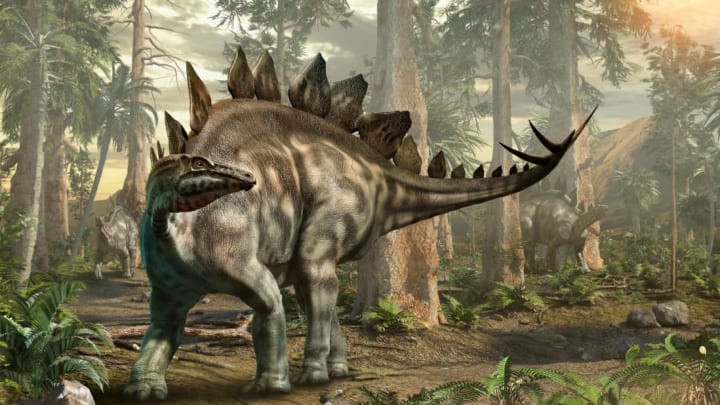Today, Scotland's Isle of Skye is a picturesque tourist destination. But 170 million years ago, it was home to one of the most iconic dinosaurs to ever roam the Earth. As The Guardian reports, paleontologists have found prehistoric footprints on the island that are believed to have come from a stegosaurus.
As researchers from the University of Edinburgh note in their new study published in the journal Plos One, the discovery marks the first evidence of stegosaurus on the Isle of Skye. The tracks, which were found in sedimentary rock on the east side of the island, are roughly the size of grapefruits. They follow a line stretching several feet, with a right-left sequence reflecting the gait of a four-legged animal. The shape of the prints themselves—larger, triangular back feet and slightly smaller front ones—match the skeleton of the armor-plated stegosaurus. If they do belong to stegosaurus, the 170-million-year-old find "represents one of the oldest fossil records of this major dinosaur group from anywhere in the world," the researchers write.
The stegosaurus made up just part of the recent Isle of Skye discoveries. Paleontologists also found prints with three-toes and claws from theropods (the group of carnivores that included T. Rex), and stubby three-toed tracks potentially belonging to ornithopods like duck-billed dinosaurs. Altogether, 50 new footprint fossils were found.
The Isle of Skye has long been known as a hotspot for dinosaur remains. During the Middle Jurassic period, the area had a swampy, subtropical climate that supported a vibrant wildlife population. The location where these latest tracks were discovered was a mudflat fringing a lagoon 170 million years ago. The mudflats were likely only around for a brief time before they were overtaken by the lagoon, indicating the species making up the batch of prints occupied the area around the same time. The researchers write, "As a result of this diversity, we can infer that a thriving community of dinosaurs lived in and near the subtropical lagoons of Middle Jurassic Scotland."
[h/t The Guardian]
